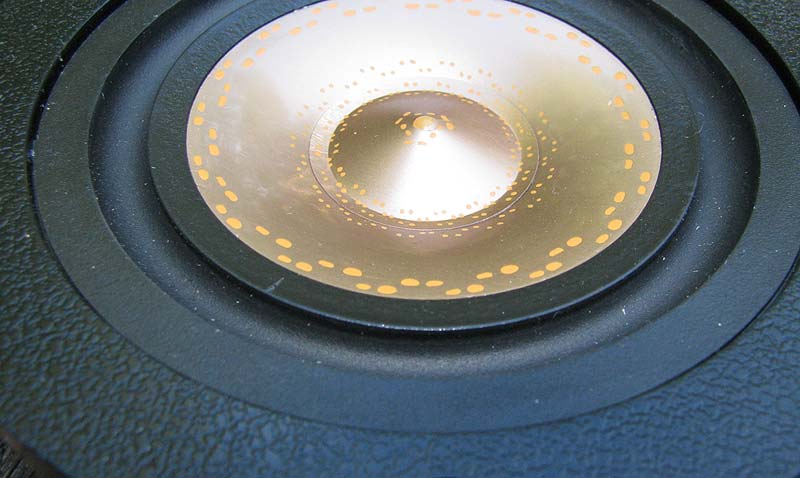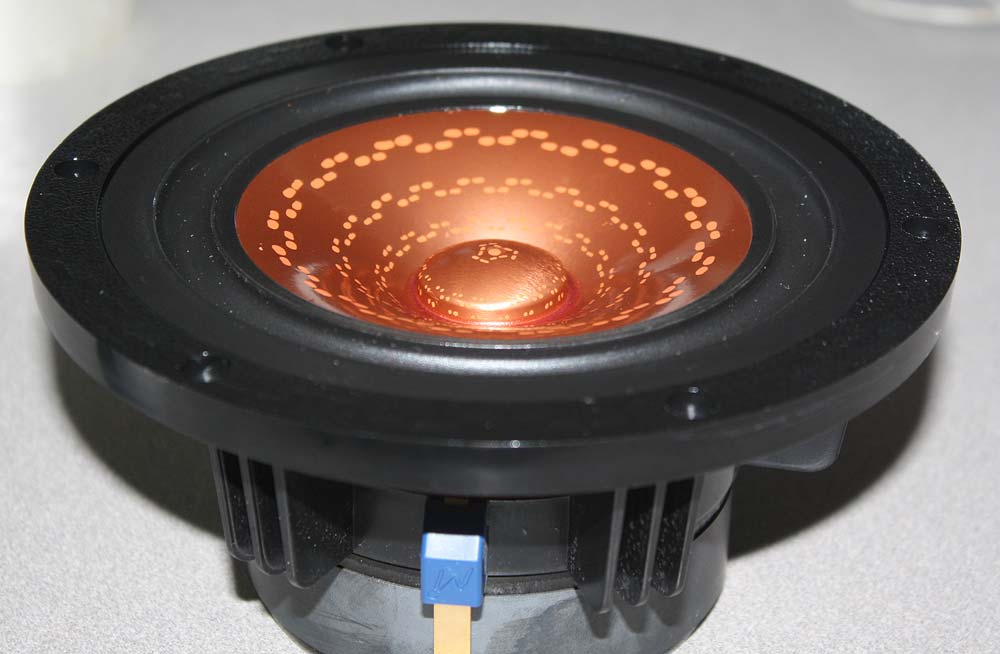I've never seen anything on using a crossover with the Alpair 10, and all the info is in the Full Range forum. But I'm wondering if it would be worth crossing over to a good cone tweeter somewhere in the frequency range?
Has anyone tried this or could speculate what the gains might be? I have 2 pairs of Alpair 10M, one in tall thin columns.
Has anyone tried this or could speculate what the gains might be? I have 2 pairs of Alpair 10M, one in tall thin columns.
Depends on opinion really, and how you define 'worth'. The MA-Sota commercial range was conceptually more or less that (slightly larger wideband than the 10.3, with a smaller wideband as a cone tweeter). You'll get a slightly superior HF linearity and power response if done well.
Thanks for the reply. I didn't know the Sota - just looked it up. I was thinking of a tweeter more like the SEAS 29TFF for instance. The Sota crosses over at 1.8K but it could be higher, presumably. I don't know if an aluminium dome tweeter would blend better or not?
Do you have any ideas for a tweeter and crossover frequency for an Alpair 10M?
Do you have any ideas for a tweeter and crossover frequency for an Alpair 10M?
You might be better off looking at crossovers around 5khz to a small ribbon tweeter like the Fountek CD1.0 o X1.0 or the BZ CQ66.
Actually, most of the MA-Sota speakers crossed around 2.2KHz, notwithstanding the repeated error in the marketing -I know, because I designed them (within the stipulations laid down by the company). If it had been up to me / my choice, I would have crossed significantly lower. Be that as it may, yes, you can cross lower or higher that 1.8KHz (or 2.2KHz for that matter). It basically depends what you're aiming to achieve. A higher crossover frequency will usually come at the price of an inferior / less even polar response, although the 10.3 is better than some off-axis. Personally, I don't much like most ribbons, especially small ones: you usually have to cross high as their distortion performance lower down tends to be lousy, while their own polar response is typically rather different to the midbass -or in this case the wideband unit. YMMV as always though. The tweeter selection really depends on budget, plus however much you have left over for the filter, but there are plenty of good examples -just make sure you select according to objectives.
Scottmoose how much lower in frequency would you go? Which MA driver would you use for the tweeter? (Always nice to ask the experts)
There's no one answer to that, it depends what your objectives are & what mid-tweeter you select. Many use the 10.3 itself as a midtweeter so to be honest, I'd probably be inclined toward a 1in dome if you're intending to use it as a midbass as there's less advantage to a cone tweeter with the relatively small main unit. If you wanted to take that approach though, the CHN50 or Alpair 5.3 work well in that role; depending on crossover slope & complexity I'd probably aim for 500Hz - 1KHz.
The A10.3 came up in your other thread.
The biggest issue when bringing a tweeter in up top, the addition of the XO may cause more issues than any gain up top. The A10.3 is pretty good (you will see some using a filter, the EnABL treatment i did on all ours tamed any top end issues).
For mid use the A7/11ms may be better, with their mono-suspension, and any potential theoretical issues with loss of control at the bottom becomes moot as a woofer will be below.
I have heard many tries of adding a tweeter to a really good FR, and so far all have failed. Getting XO right is critical. Where you cross is of course a tradeoff.
dave
The biggest issue when bringing a tweeter in up top, the addition of the XO may cause more issues than any gain up top. The A10.3 is pretty good (you will see some using a filter, the EnABL treatment i did on all ours tamed any top end issues).
For mid use the A7/11ms may be better, with their mono-suspension, and any potential theoretical issues with loss of control at the bottom becomes moot as a woofer will be below.
I have heard many tries of adding a tweeter to a really good FR, and so far all have failed. Getting XO right is critical. Where you cross is of course a tradeoff.
dave
They make very good tweeters. I am currently using Alpair 5.2eN down to under 200 Hz (i usually don’t use them that low except when they have no help below)....the CHN50 or Alpair 5.3….
When considering these as tweeters, look at them as a 19mm dome (the dustcap) with a really big surround (the cone).
Using these with any of the larger metal alpairs menas that you can likely get away with first order XOs anywhere from really low to more typical tweteer XO points. Voicing is pretty much the same, XO point could come down to where dispersions can be best matced.
Besides the SOTA, Scott has done a number of other WAW (a 2-way) that can inspire and lend clues.
I also mention that this is where having something like a miniDSP to quicly figure out where you should start with a passive.
dave
Has anyone tried this or could speculate what the gains might be? I have 2 pairs of Alpair 10M, one in tall thin columns.
andyjevans,
These are first generation Alpair 10 metal cone drivers?
Is this because of a concern with the Alpair itself?I'd probably aim for 500Hz - 1KHz
first gen Alpair 10 could use a tweeter to remove the Jordan-like HF artifacts.
A10m usully refers to A10.3 so as to differentaite it from Alpair 10p, paper cone released simultaneously.
A10.3 is WAY better (considerably fewer artifacts) and quite different. Mark finally let lose from what Ted would have him do (started with Alpair 7 (superb) and the origianl netak Alpair 12 (not as outstanding). At the time, Mark said that the A12 was very hard to do, but he obviously learned lessons as we see in the Alpair 11ms and CHN-110.
dave
A10m usully refers to A10.3 so as to differentaite it from Alpair 10p, paper cone released simultaneously.
A10.3 is WAY better (considerably fewer artifacts) and quite different. Mark finally let lose from what Ted would have him do (started with Alpair 7 (superb) and the origianl netak Alpair 12 (not as outstanding). At the time, Mark said that the A12 was very hard to do, but he obviously learned lessons as we see in the Alpair 11ms and CHN-110.
dave
I have first gen 10M in my columns at present. I have a pair of 10.3 still in boxes. I think you're suggesting I should substitute those.first gen Alpair 10 could use a tweeter to remove the Jordan-like HF artifacts.
A10.3 is WAY better (considerably fewer artifacts) and quite different. dave
They should not be called 10m. Just10.
A10.3 will not work in most A10 boxes. As the improvement mid/top continued A10>A10.2/A10.3 (A10m) the increases in sensitivity came from sacrificing bass exertion. As a mid the box will be less critical and bas sis not an issue.
A10.3 is dramatically better mid/top than A10.
Can’t find pics of A10, but the distinguising feature is the conical (jordan-style) dustcap as on these A6eN (Gold, you can see why i insisyt the newest ones are copper not gold as they are called)

Copper A10.3eN

Biggest visible difference is the dustcap, but the cone shape is different as well.
Tha A10.3 needs a lot of break-in, start now.
dave
A10.3 will not work in most A10 boxes. As the improvement mid/top continued A10>A10.2/A10.3 (A10m) the increases in sensitivity came from sacrificing bass exertion. As a mid the box will be less critical and bas sis not an issue.
A10.3 is dramatically better mid/top than A10.
Can’t find pics of A10, but the distinguising feature is the conical (jordan-style) dustcap as on these A6eN (Gold, you can see why i insisyt the newest ones are copper not gold as they are called)

Copper A10.3eN

Biggest visible difference is the dustcap, but the cone shape is different as well.
Tha A10.3 needs a lot of break-in, start now.
dave
Last edited:
Here's a link to a post by diyAudio member Toppsy on another forum that shows the Alpair 10:
https://www.audio-talk.co.uk/phpBB3/viewtopic.php?p=37327#p37327
https://www.audio-talk.co.uk/phpBB3/viewtopic.php?p=37327#p37327
No, purely a reflection of history (which I am well aware you know as well or better than I do) and practicality.Is this because of a concern with the Alpair itself?
Assuming you have a mid-tweet with sufficient LF extension & power-handling capacity, which has superior off-axis performance to the LF unit, my default preference is to cross lower rather than higher. That might not be everyone's choice, but I doubt anyone would consider it controversial either. 500Hz was historically one of the favoured options since an analysis of the typical power-distribution of an orchestra shows output demands fall rapidly above that point, making it a good compromise filter frequency between power-handling, dispersion, and not pushing the transition band any further into the telephone BW than necessary. If you need to cross a little higher, so be it; you do the best you can with the specific circumstances you have. My one Viotti Ones cross at 800Hz for e.g. (slightly larger main unit). Partly a nod to Altec, who used 800Hz occasionally, partly because that's how things lined up with on-baffle frequency, impedance responses, partly because it puts it into a narrow BW where image localisation can be difficult, and partly for the prosaic, boring but eminently practical reason that there wasn't physically room for larger components in the crossover compartment. 😉
- Home
- Loudspeakers
- Multi-Way
- Alpair 10M units with a crossover?